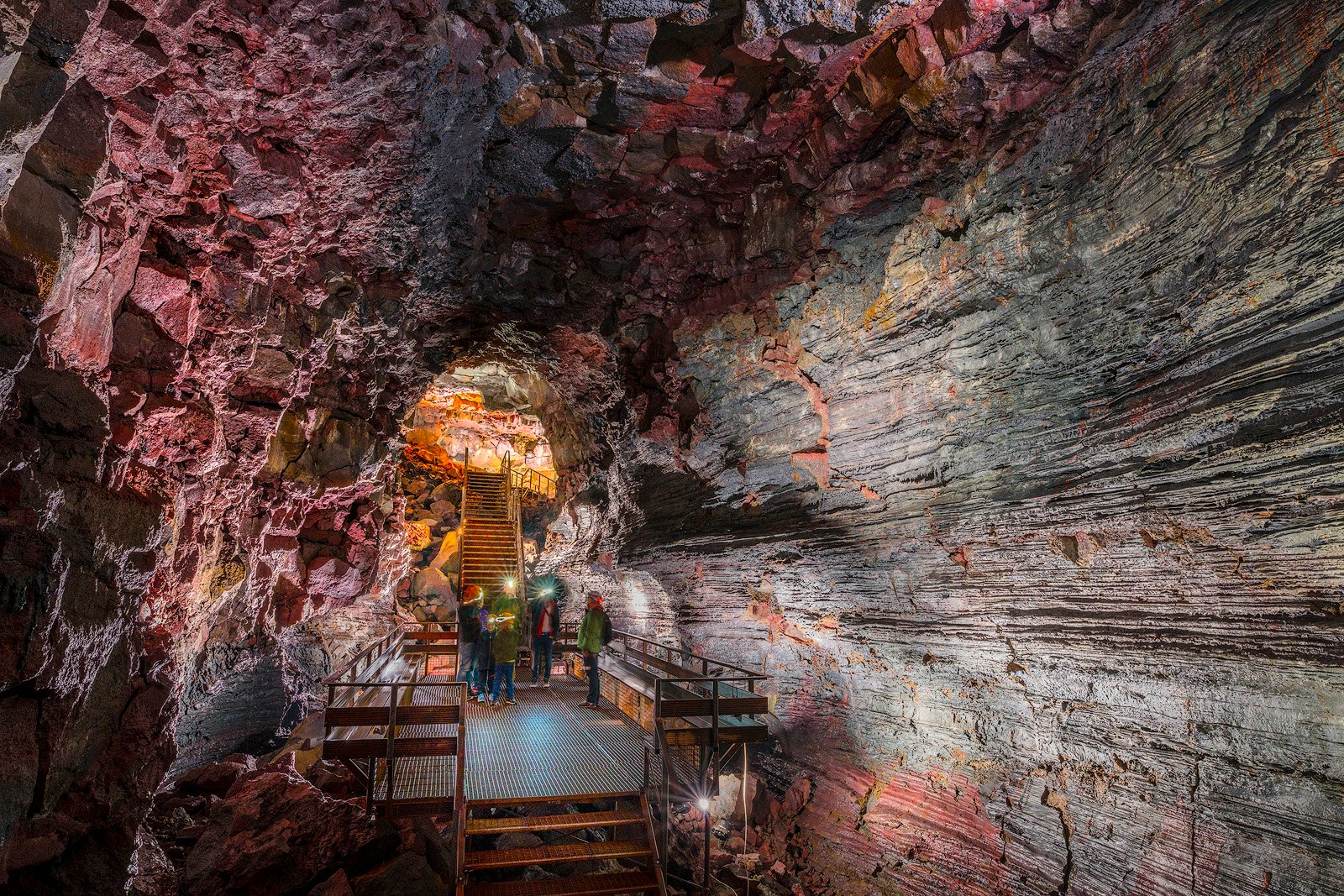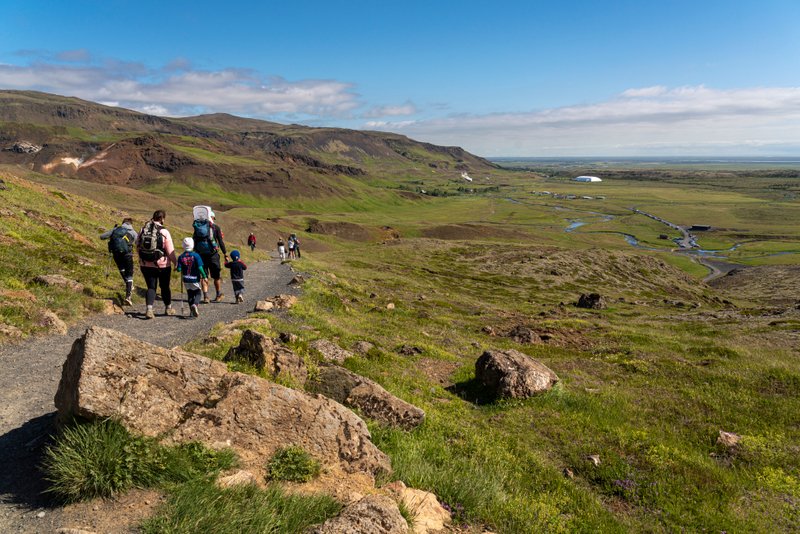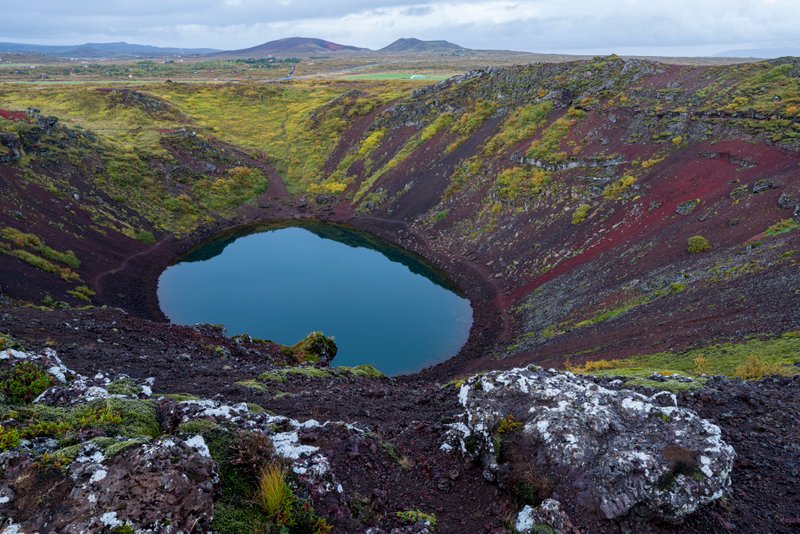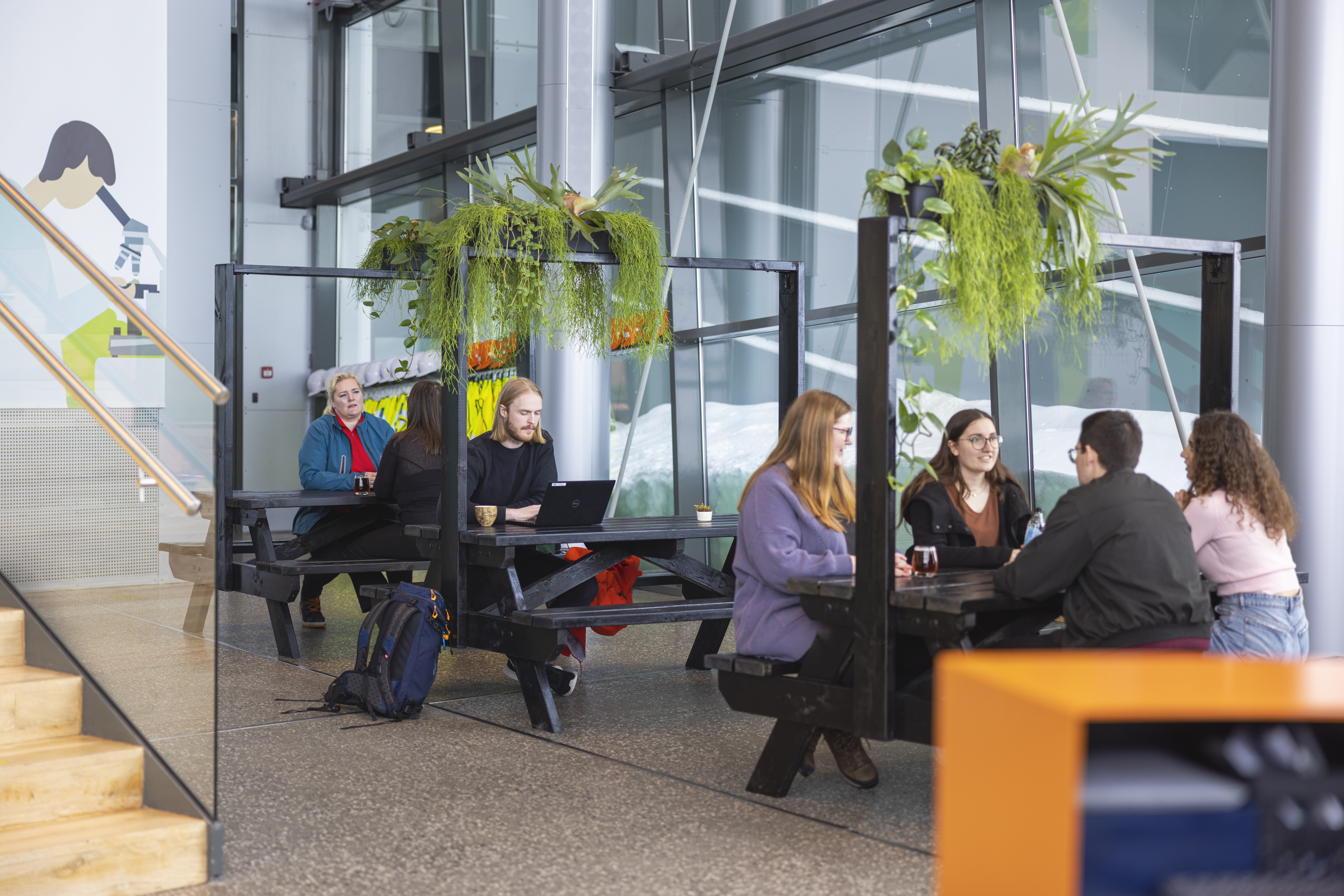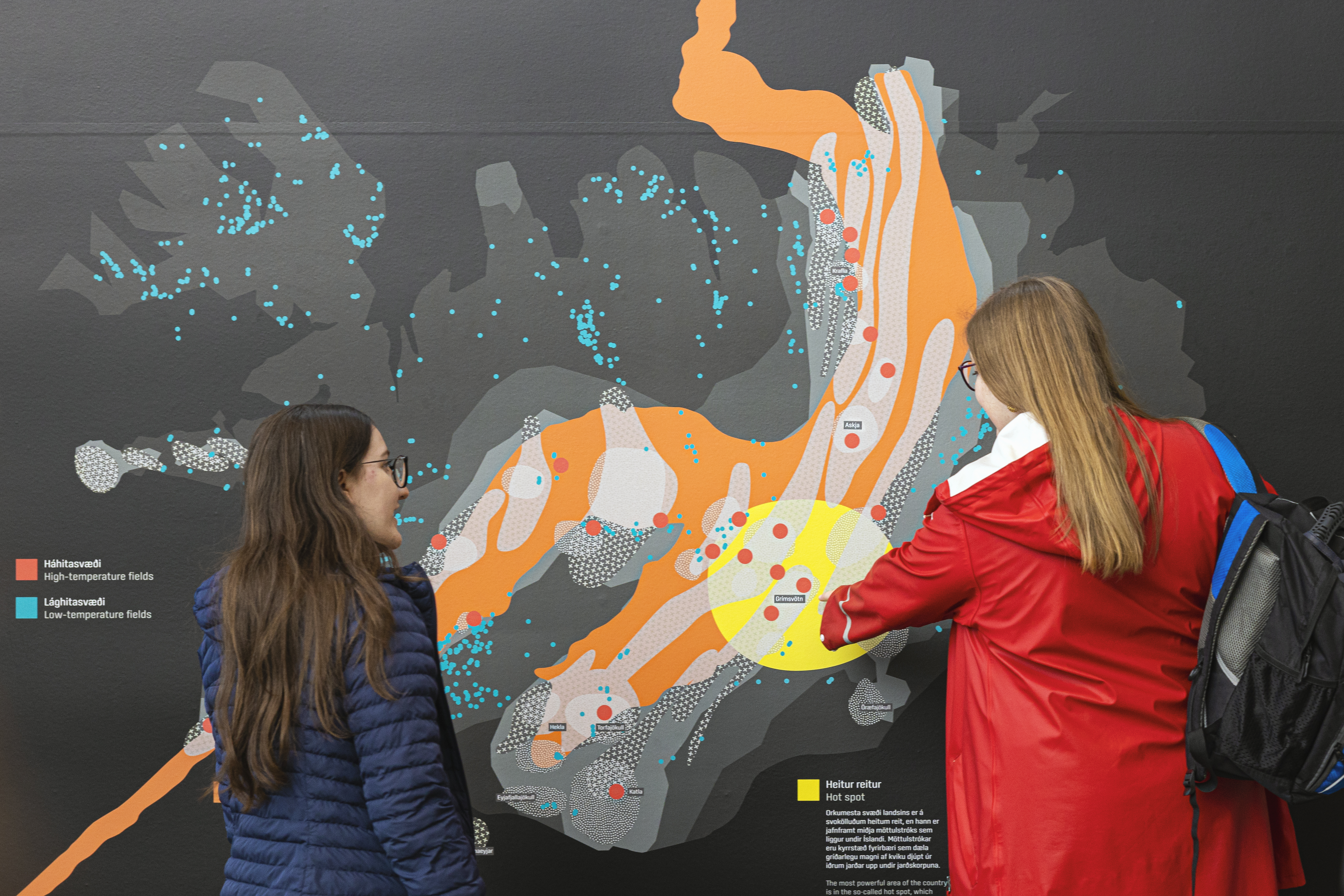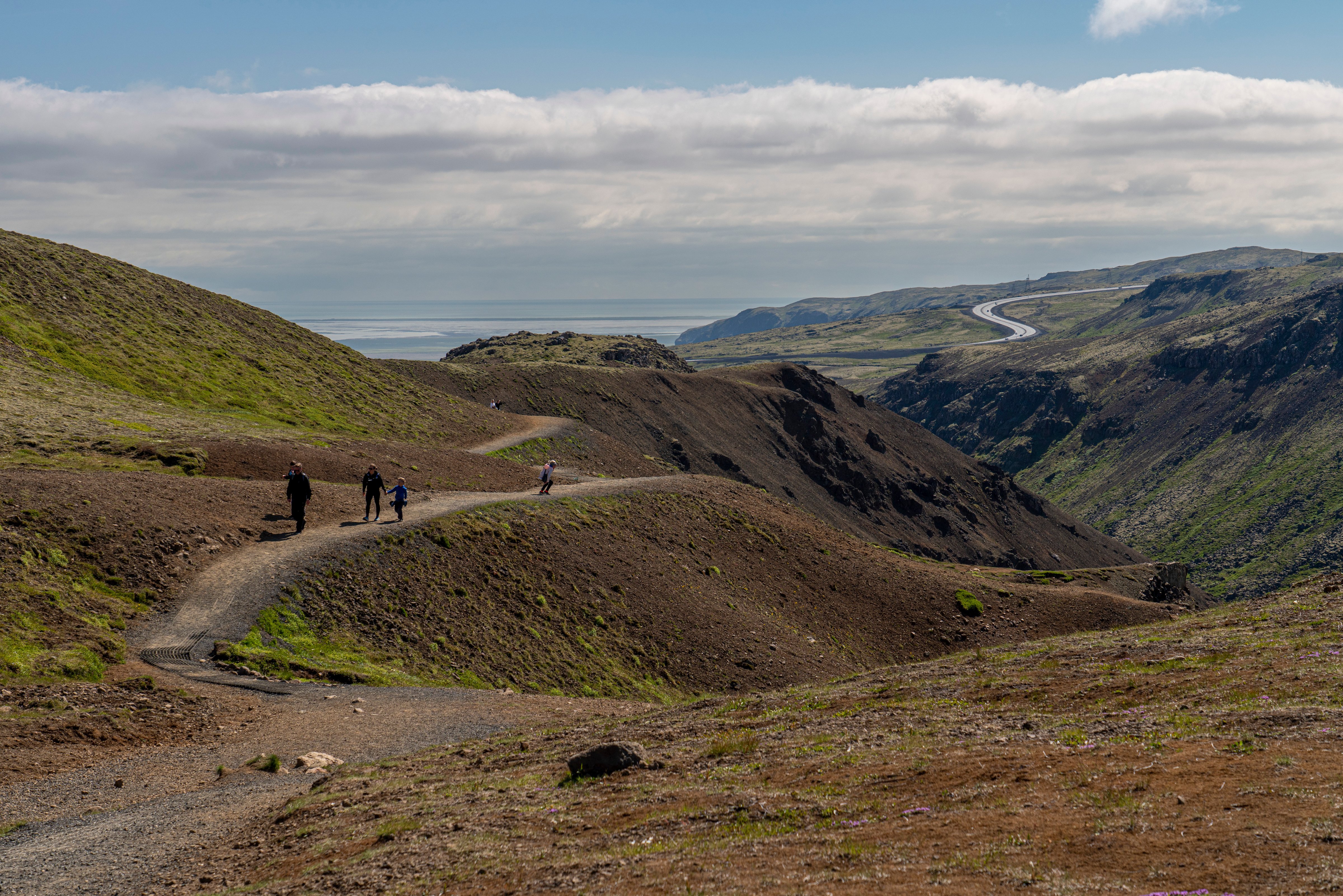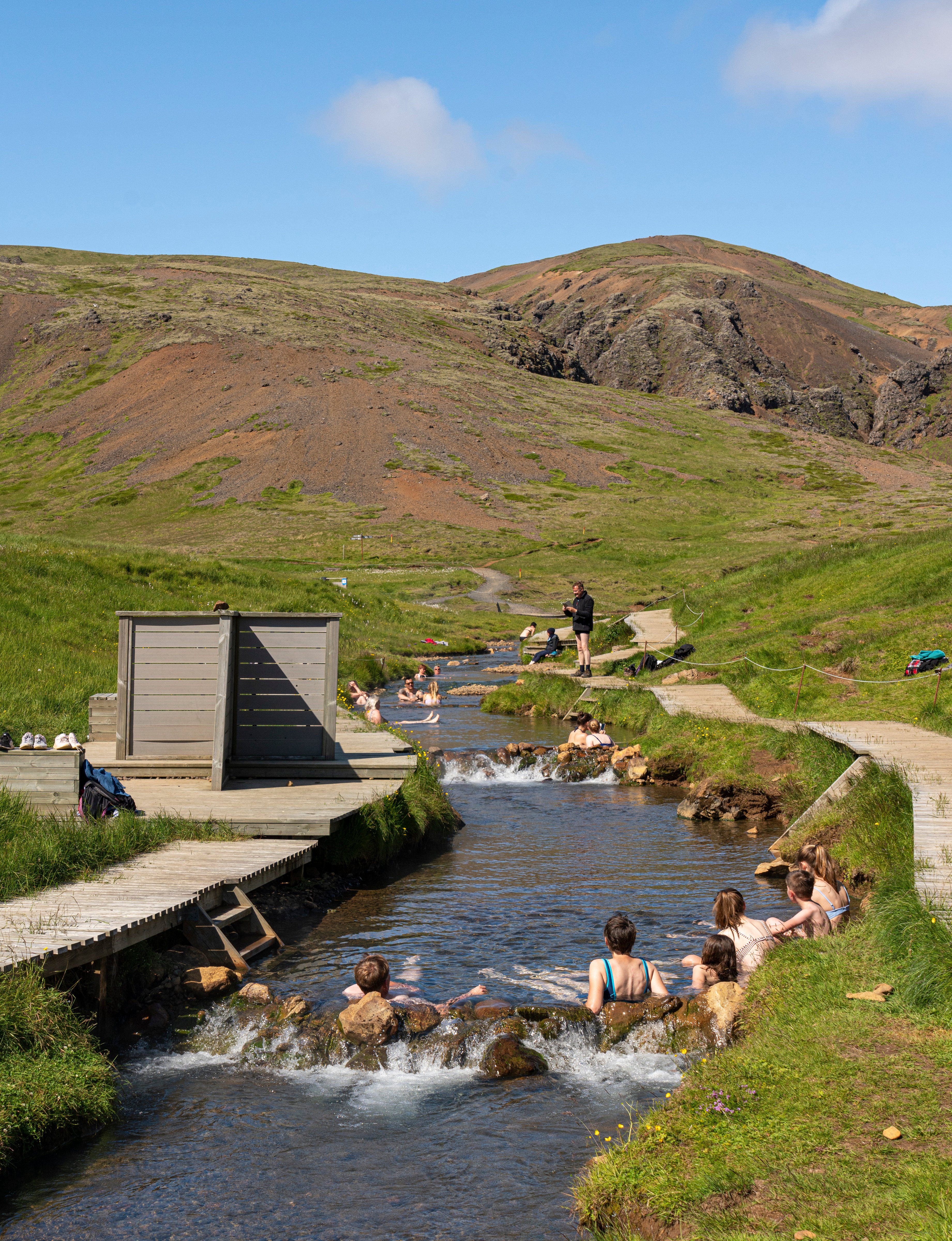Welcome to the vicinity of Hengill - stage two of The Volcanic Way
As you reach the vicinity of Hengill, you will start noticing steam rising from hills, mountains, and even within the town of Hveragerði. The faint sulfuric smell goes almost unnoticed by locals who, for centuries, have put Earth’s heat to good use. Visit the Geothermal exhibition at Hellisheiði Geothermal power plant, relax in the warm river of Reykjadalur valley, or enjoy a walk at the Geothermal Park. Going deeper, a cave tour into the Raufarhólshellir lava tunnel will bring you underground and up close to Earth's volcanic veins.
Learn and discover:
Locals recommend:
Popular places:
